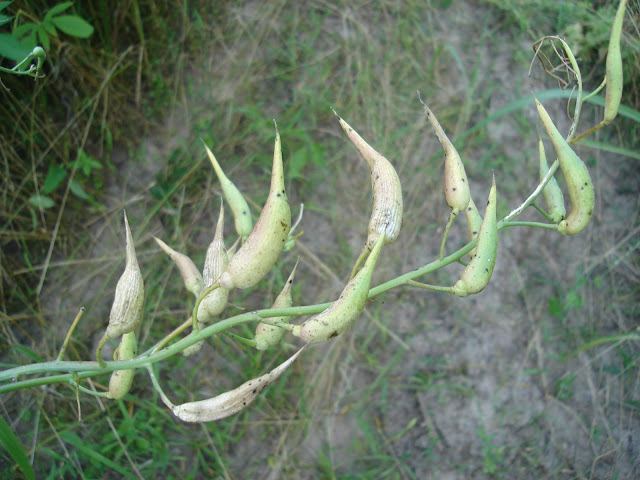 |
| This is the famous Yale fence, where undergraduate men gathered."The tradition of the Fence began in 1833, when the picket fence fronting the Old Brick Row was replaced by a rail fence on which one could comfortably lean or perch. It soon attracted students in great numbers for the sharing of news and idle chatter." |
I was pleased to see the birds take to the rustic fence in the backyard. The cardinal was using it, even balancing on the wobbly upright branch, before we built it across the yard.
The fence consists of the dead tree we cut up and the young tree our helper cut down. The branches from the young tree are still attached, and so are the leaves. It was growing into the house's foundations, so it was better to cut it, tree huggers. Our helper dragged it a block.
 |
| More rustic and a lot less weedy than this one. |
I learned in Midland that birds will gather on branches near the ground. We had a large pile near the curb, for bulk pickup. The truck did not come for some time, but the birds sat there chattering like the happiest critters on earth, oblivious to car traffic.
We used to gather discarded Christmas trees and toss them in the snow near the compost bin in Midland. Birds like extra protection and warmth. I bought garbage bags of popcorn after a local event and kept it for the birds. Soon we had a choir of birds singing praise whenever I entered the backyard.
We had very heavy snowfall right after I cornered the market on popcorn.
 |
| The intensity of color in the sunlight cannot be captured in a photo. |
Birds on the Fence
Why do the birds not stay up in the trees? some are asking. The birds like a low perch that gives them a good view of the insect life in the grass. In our yard that also includes a view of various food sources, 12 bird baths and 2 community pools. They overlook sunflowers ripening, mulched beds teeming with life, seeds, nuts, suet, and fruit.
Casual observation shows that the contented chirping of birds will bring more species to the same pile of brush. A little bit of preparation yields a lot of benefits.
Today we had three starlings splashing in the first community pool. They like to push their wings under the water and let the water flow across their bodies. They splash around together and get plenty of bathing time.
I do everything possible to enhance bird food, bathing, and shelter. They reward us with a constant show. The platform feeder, finch feeder, and Jackson EZ Bird Swing create a constant display of birds and squirrels eating, swinging, and trying to establish dominance, just outside our window.
Opening the back door or back gate means seeing 20 birds launch into the air at once. If I stay outside a few minutes, some of them come back to be the first at one of the feeders. I often see a goldfinch, cardinal, or robin from a short distance away.
Mutual Help
Helping one group of animals will also nurture another. Plants for butterflies and hummingbirds will also feed the bees, who really feed everyone.
Logs for birds will shelter toads and generate more critter life for everyone by rotting into the soil.
Leaf litter for the soil is also a blanket for beneficial insects throughout the winter. When the warmth and rain of spring end the leaf litter, the hatching and emergence of immature insects feed the birds.
Compost builds the earthworm population, because building and spreading it means distributing the earthworm egg capsules as one singular bonus.
Compost also builds beneficial soil life by nurturing the bacteria, fungus, and soil creatures that battle and feed while capturing nutrition for the top 12 inches of soil where the plants and trees feed.
Variety in plant life means more creatures can live in the yard. Butterflies favor certain plants, such as the Swallowtail on the parsley, the Monarch on the Milkweed and Butterfly Weed. Various bloom times not only keep the bees fed, but the kinds of blooms attract a variety of wild bees, which are far more varied than just the bumble bee and honey bee.
The often despised weeds are intermediaries in many ways. Tap roots bring calcium up to the surface - usable calcium, unlike crushed egg shells. The entire gardening world wants to crush eggs shells for the soil, but they do help birds and earthworms, just not the soil directly.
Weeds also provide a constant supply of pollen, nectar, and seeds for bees and birds.
Leaf litter and dried grass are building materials for bird nests, as well as building blocks for healthy soil.
 |
| Radish seed pods are mild with that typical radish flavor. |
 |
| Radishes germinate fast and help the gardener with planter's remorse - "My plants will never emerge. Oh, there are the radishes. I have hope again." |

